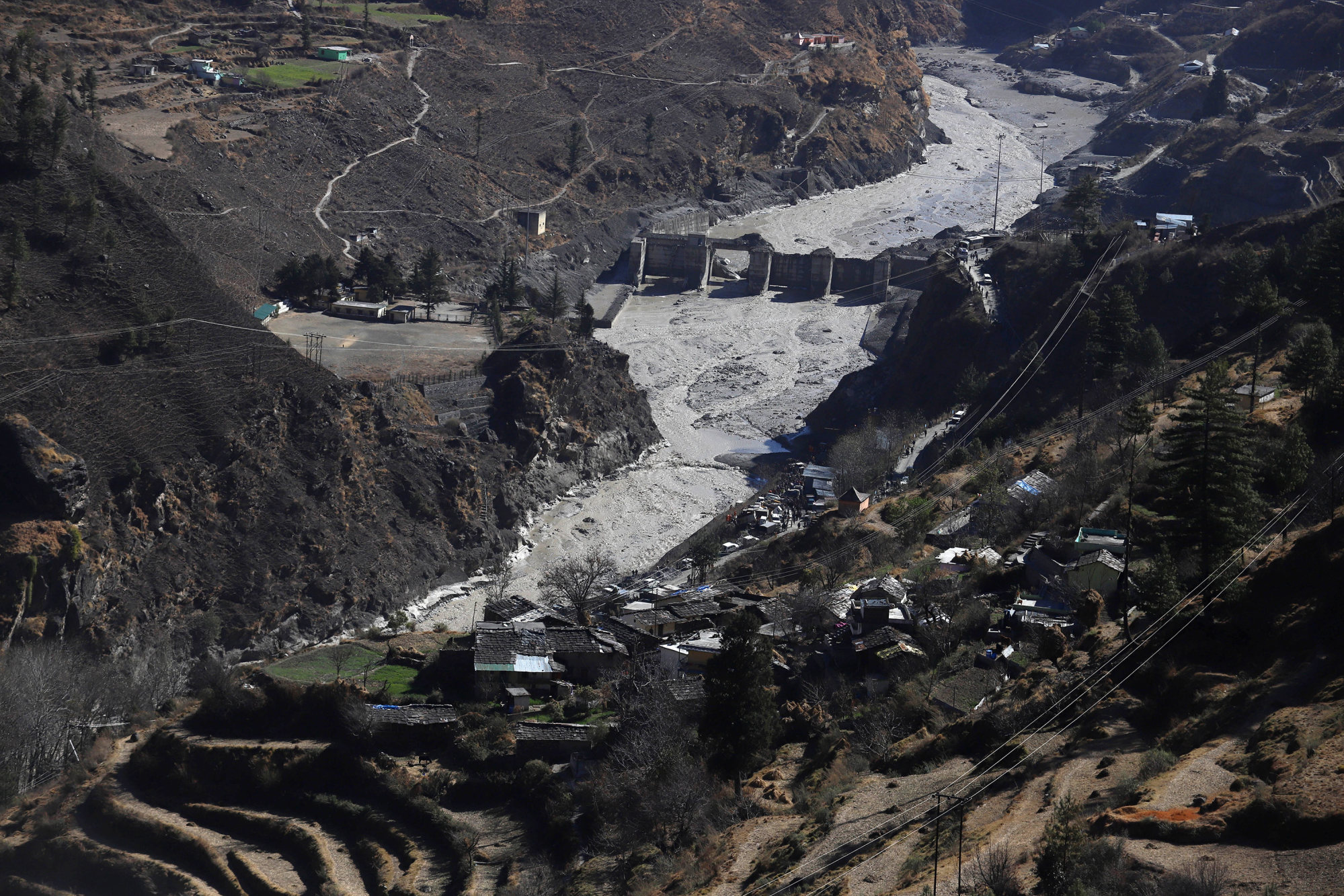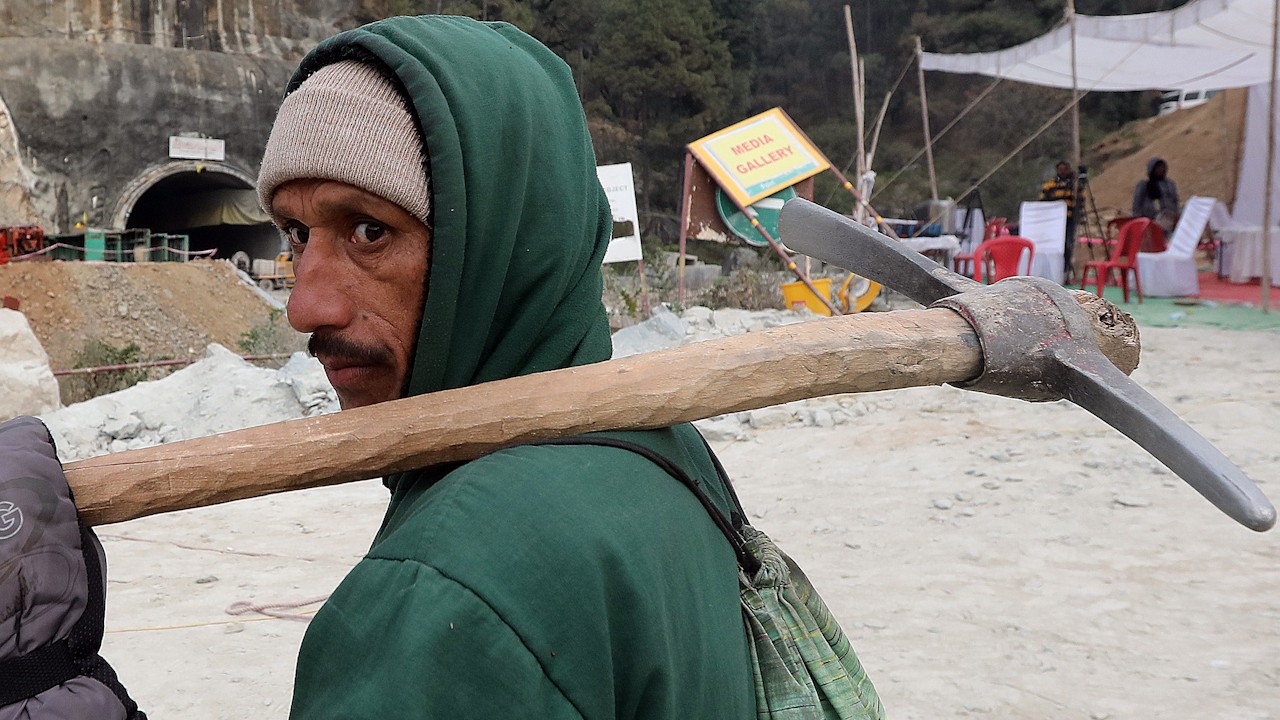
India’s ‘rathole’ tunnel rescue spotlights dangers of Himalayan infrastructure work
- The workers’ 17-day ordeal in a tunnel in Uttarakhand is just the latest in a string of accidents and disasters in the ecologically sensitive region
- Experts caution that development work should be done in consultation with teams of scientists, geologists and engineers to minimise disasters
“The government should audit and review the construction quality of all tunnels in the Himalayas. Once they are opened, they will also be prone to jerking and shaking movement due to the traffic,” said Yashpal Sundriyal, a geology professor at the Hemwati Nandan Bahuguna Garhwal University in northern India’s Uttarakhand state, where the under-construction tunnel is located.
“The geology of the tunnel which is being constructed is on weak rocks. When we are constructing anything in such a zone, we will have to take extra care,” he added.
India’s mountainous northern regions are prone to shearing – the deformation of rocks as they move against each other – which makes them highly vulnerable to fragmentation and collapse, according to Sundriyal.
He said the main reason that the tunnel caved in was that the support systems needed to ensure stability were not installed before the construction team commenced work.
All 41 Indian workers trapped in tunnel for 17 days rescued
The workers became trapped under 60 metres of rubble when a landslide caused a portion of the Silkyara tunnel – part of a US$1.5 billion project to connect key Hindu pilgrimage sites spread across some 890km – to cave in.
Sundriyal warned that authorities should also review work on the Rishikesh-Karanprayag railway line, which is being constructed in the same region and where around 127km out of a planned 213km of tunnels have been completed.
The project, which has faced delays due to the pandemic and a ban on mechanised mining, is about 60 per cent complete and is due to be finished by 2025.
“Whenever taking up such massive engineering work, it is of utmost importance to take up a thorough geotechnical and geophysical mapping of the specific rock on which the tunnel is to be constructed,” said M.P.S. Bisht, a geologist who also works at Hemwati Nandan Bahuguna Garhwal University.
Safety measures need to be tracked consistently while the construction work is carried out, he said.
The ecologically sensitive Himalayan region has been caught in a vicious cycle of construction and destruction as climate change has exacerbated a pattern of natural disasters.
A region prone to disasters
Large infrastructure projects to connect remote mountain villages to the rest of the country, which Indian authorities have deemed necessary for national development, have suffered in recent months and years.
In August, the newly constructed Mandi-Manali highway in Himachal Pradesh state was damaged by the overflowing Beas River, days before it was to be inaugurated.
Devastating floods and landslides caused by a sudden torrential downpour in Uttarakhand state a decade ago destroyed several villages and towns, sweeping away thousands of people whose bodies were never recovered.

In addition to climate change, scientists say human activity such as blasting away vulnerable mountain sides to build roads and building houses close to river banks that are prone to change course are also to blame for the tragedies.
A slow and methodical approach is key to ensure safe infrastructure development in the Himalayas, according to environmentalists.
“The pace of development has to be very slow in the mountains, whether you are making a road or a tunnel. You can’t build 5km to 10km roads overnight,” said Anil P Joshi, an environmentalist based in Uttarakhand.
Tunnels must be built section by section and lined with concrete before workers dig deeper, he said, adding that machinery and tools that create a lot of vibrations should be avoided.
It is important to consider the geological features of the fragile Himalayas and climate change while taking up infrastructure development
“It is important to consider the geological features of the fragile Himalayas and climate change while taking up infrastructure development,” Joshi said.
Death toll rises to 77 in India Himalayan glacial lake floods
Uttarakhand contains the source of India’s most revered river, the Ganges and its tributaries, which sustains more than 600 million people. Many of the picturesque towns and villages in the state are underdeveloped, however, which is partly driving the recent surge in construction.
But experts caution that development work should be done in consultation with teams of scientists, geologists and engineers to minimise disasters.
“We have to have a proper policy in place for infrastructure development in the mountains,” Joshi said. “At the same time, you cannot ignore development of the Himalayas because the people living there would be deprived of advantages that their counterparts in the plains enjoy.”


